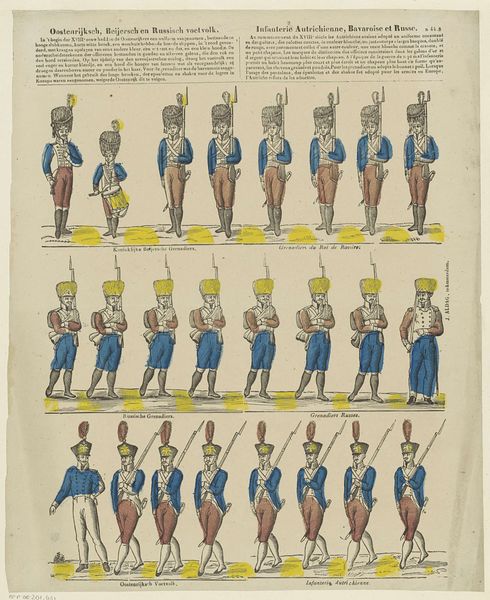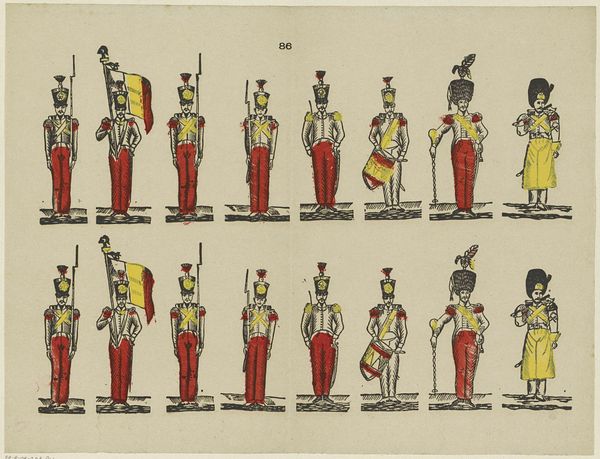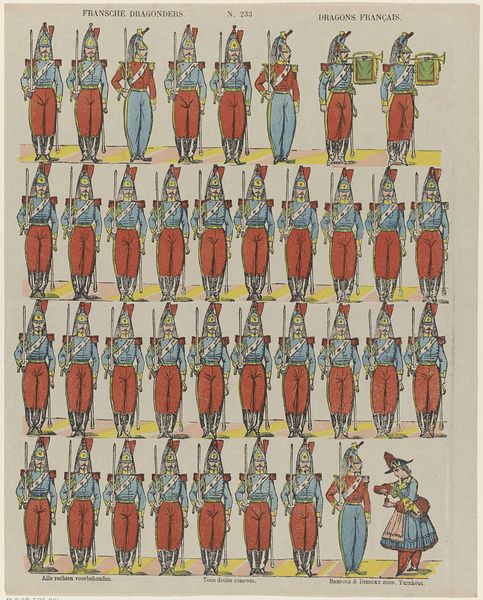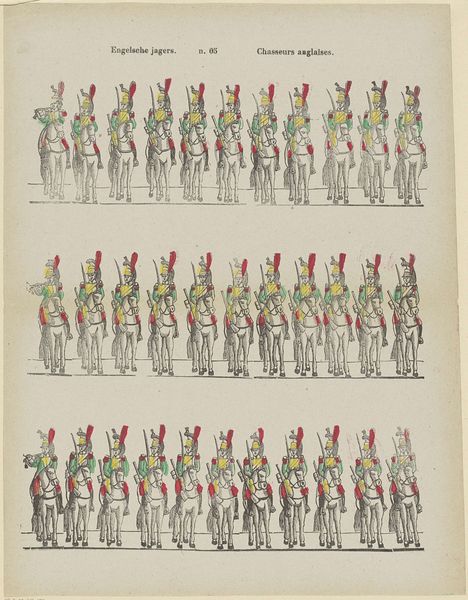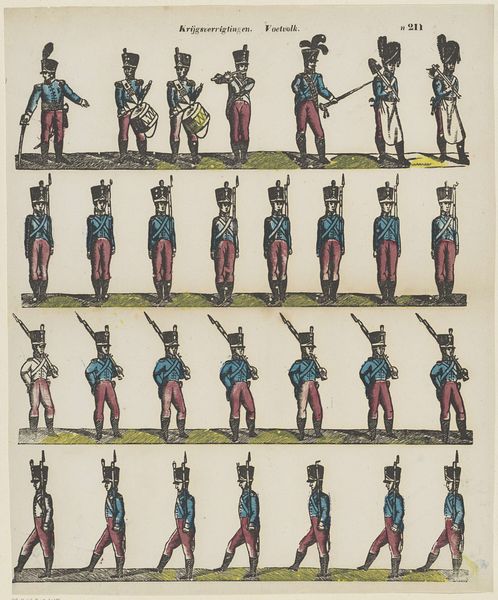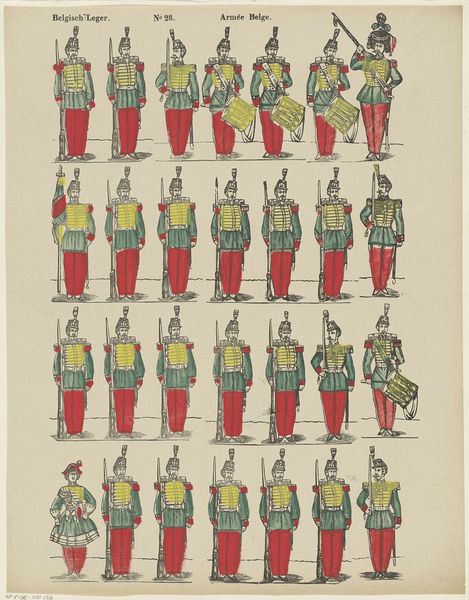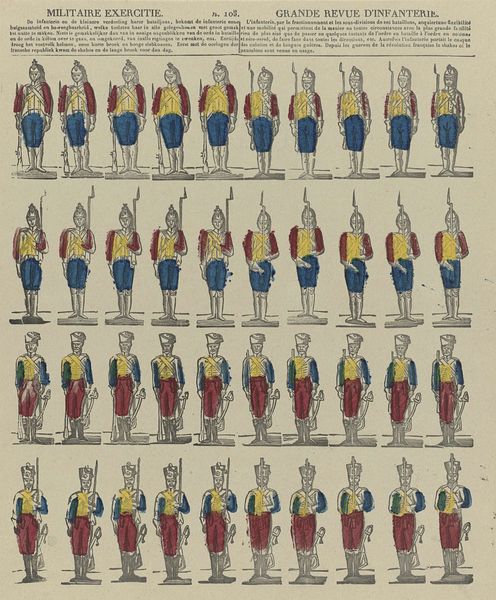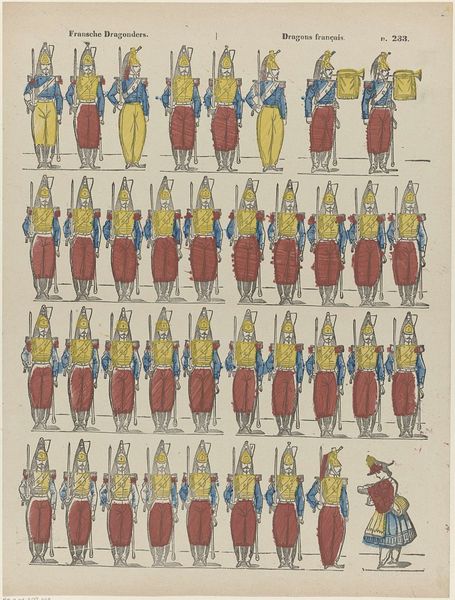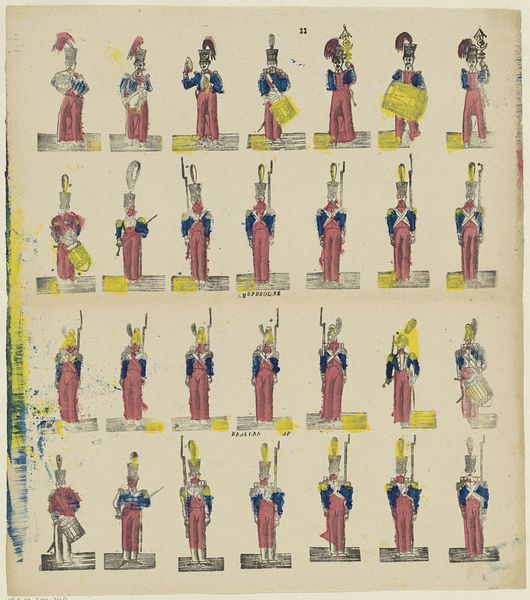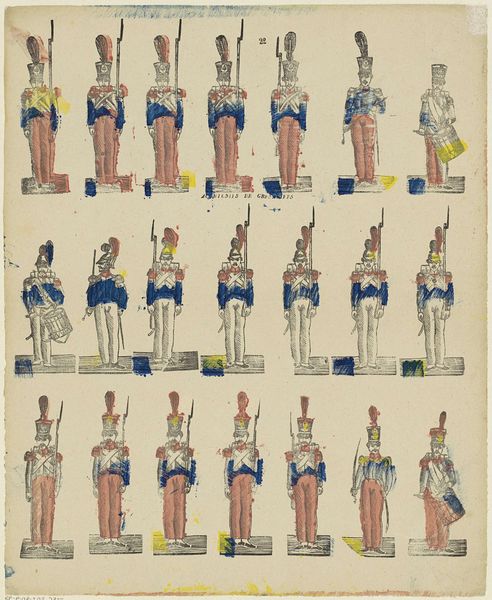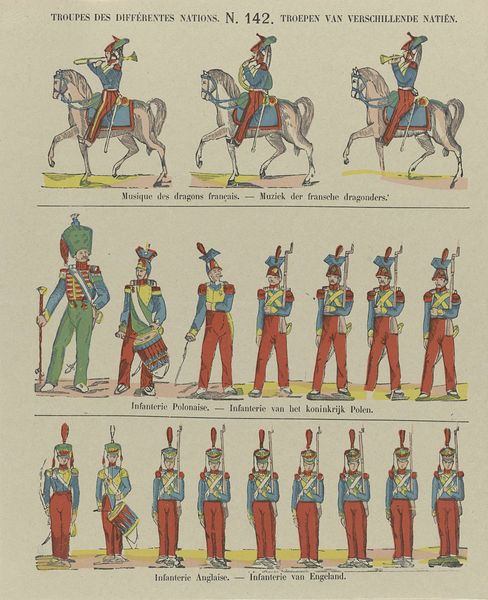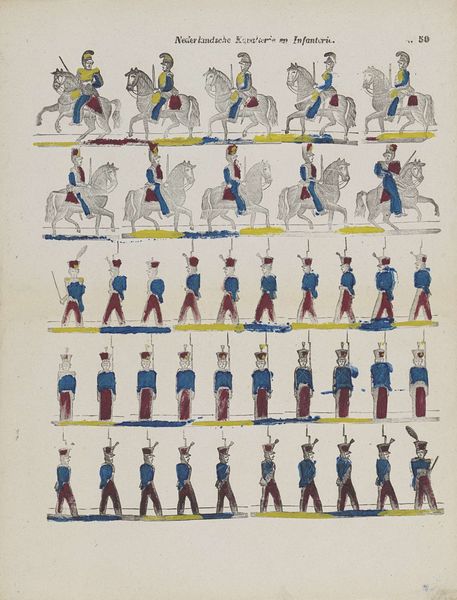
drawing, pencil
#
drawing
#
pencil
#
history-painting
#
academic-art
Dimensions: height 317 mm, width 390 mm
Copyright: Rijks Museum: Open Domain
Editor: Here we have "Militairen," made sometime between 1827 and 1894 by M. Hemeleers-van Houter, rendered in pencil. It’s currently held in the Rijksmuseum collection. Visually, they strike me as rigidly regimented, almost like paper soldiers in formation. What do you see in this piece, considering the artist’s choices in composition? Curator: I am most interested in the way the figures’ structure echoes one another; their seriality reduces each one to an instance of form. The visual effect arises from the deployment of line and shape rather than anecdotal detail or realistic portrayal. Hemeleers-van Houter seems primarily concerned with the graphic arrangement of elements upon the page. The palette also enhances this effect—it's employed less to realistically render clothing and more to reinforce the formal architecture of the drawing. What purpose do you believe this regimented composition served? Editor: Perhaps it served to dehumanize them and to highlight the rigidity and obedience required by the military system during the period? Or, since they are simple pencil and colour on paper, maybe the artist had accessibility or child's play in mind? I can imagine how impactful an army laid out with this uniformity would have looked to children, or any spectator, really! Curator: The colour heightens that. Consider how those simple red and blue patches interact; the planes of uniform they produce establish rhythms and breaks in the lines of figures. It almost visualizes the cadence of soldiers, yes. Do you see any breaks in the pattern? Editor: I do notice the figure in the first row is wearing something more like gray rather than yellow; and in the bottom right, a drummer. That almost suggests ranks to me, although it seems that may have less importance. But if not ranks, then what purpose does that drummer serve here compositionally? Curator: He does destabilize the regimentation somewhat. Perhaps to introduce variety or possibly highlight the sonic aspect. But as we reflect on what this picture can teach us, I'm struck at how colour and the position can transform regimented monotony. Editor: It is amazing how, through just formal decisions, even simple colour, can be so effective! Thank you for shedding some light!
Comments
No comments
Be the first to comment and join the conversation on the ultimate creative platform.

